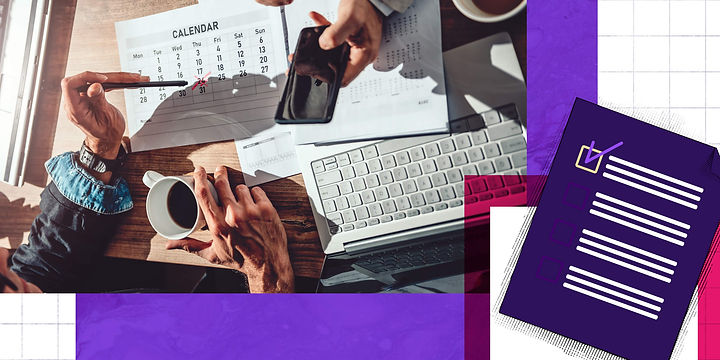
GROUP 1 FIELD STUDY
"A Joyful Journey Towards the Center of Teaching"


DOMAIN 4:
CURRICULUM AND PLANNING


DOMAIN 4:
Curriculum and Planning
Domain 4 addresses teachers’ knowledge of and interaction with the national and local curriculum requirements. This Domain has 5 strands: (1) Planning and management of teaching and learning process, (2) Learning outcomes aligned with learning competencies, (3) Relevance and responsiveness of learning programs, (4) Professional collaboration to enrich teaching practice, and (5) Teaching and learning resources including ICT. Tachers' ability to translate curriculum content into learning activities that are relevant to learners and based on the principles of effective teaching and learning is what Domain 4 encompasses. Furthermore, this Domain expects teachers to communicate learning goals to support learner participation, understanding and achievement.
INTRODUCTION

Image from https://www.pna.gov.ph/articles/1177503
The teacher's role in creating a lesson plan is multifaceted. It starts with setting clear learning objectives and selecting relevant content. Engaging activities are designed to facilitate understanding, while consideration is given to diverse learning needs. Assessment methods are integrated, and technology or resources may be incorporated. The teacher anticipates challenges, considers how well the lesson went, and make sure that it adheres to the curriculum standard. This comprehensive process aims to deliver a purposeful and effective learning experience for students.

Image from https://www.teacherph.com/
Curriculum planning is a purposeful and systematic approach in designing educational programs. It involves decisions about what to teach, how to teach it, and how to assess learning. This process begins with setting clear educational goals, providing direction and purpose for educators. These goals serve as the foundation for designing a curriculum that is focused on achieving desired outcomes.
Image from https://www.seameo-innotech.org/
As future educators, lesson plan is essential as it provides a structured framework for effective teaching. It ensures alignment with learning objectives, accommodates diverse learners, enables assessment, and supports classroom management. A well-constructed lesson plan prepared by a teacher for a particular lesson allows him/her to enter the classroom with more confidence and a greater possibility of having engaging activities that will result in a meaningful learning experience with students.


FIELD STUDY 1
ACTIVITY 4 – The Teaching-Learning Resources, ICT and the Curriculum
LET'S ANALYZE!

Question #1
How did you know that there exists such curriculum in the DepEd Schools/ Laboratory schools?
Answer
The statement regarding the curriculum in DepEd schools and laboratory schools is based on standard educational principles. In many countries, educational authorities, such as the Department of Education (DepEd) in the Philippines, establish a curriculum that outlines the subjects, learning objectives, and standards for each grade level. Students have the right to be aware of this curriculum, and it is considered their responsibility to engage with the educational process. Teachers, in turn, are responsible for understanding and implementing the established curriculum in their classrooms. Disseminating information about the curriculum, including learning objectives and any updates or changes, is a fundamental task for teachers. This communication is often facilitated through various means, such as classroom discussions, distribution of curriculum guides, and updates during parent-teacher conferences.

Question #2
How can educational experiences be effectively organized and contribute to the attainment of objectives/ intended learning outcomes?
Answer
Effectively organizing educational experiences to achieve objectives and intended learning outcomes requires a student-centered approach. Prioritizing students is essential in creating a conducive learning environment. To achieve this, teachers must assess the current knowledge levels of their students, regardless of the prescribed curriculum. Understanding the students' existing knowledge allows educators to tailor their teaching methods and content to meet the students where they are. Emphasizing foundational concepts before delving into advanced topics ensures that students have a solid understanding of the basics. Alignment between intended learning outcomes (ILOs) and students' existing knowledge fosters a smoother and more meaningful educational journey. This approach not only enhances comprehension but also promotes engagement and active participation in the learning process, ultimately contributing to the successful attainment of educational objectives.

Question #3
From the lesson plan, evaluate the resources and compare it with the actual resources utilized in the classroom.
Answer
The evaluation of the lesson plan and the actual resources utilized in the classroom reveals a significant alignment, particularly in the context of an actual discussion. The resources outlined in the lesson plan, whether they be digital materials, online platforms, or other virtual tools, seem to have been effectively implemented in the instructional process. This congruence between the planned and actual resources suggests a thoughtful and practical approach to lesson design, where the chosen materials and teaching strategies cater appropriately to the virtual setting. Such organization between planning and execution is crucial for ensuring a smooth and productive learning experience for students, demonstrating the adaptability of the instructional approach to the demands of education.


FIELD STUDY 1
ACTIVITY 4 – The Teaching-Learning Resources, ICT and the Curriculum
LET'S REFLECT!

Question #1
As a pre-service teacher, how do you plan, manage, and implement developmentally sequenced teaching and learning process to meet curriculum requirement in varied teaching context?
Answer
As pre-service teachers, we will plan, manage, and implement developmentally sequenced teaching and learning process to meet curriculum requirement and accommodate varied teaching context, a comprehensive approach is essential. Starting with a thorough understanding of curriculum guidelines and learning objectives, we can assess the diverse needs and learning styles of students. Clear and measurable learning objectives should always at the beginning, tailored to both curriculum demands and individual student requirements.
In terms of management, we will organize content in a logical sequence that allows for progressive learning. Strategies for differentiated instruction must be employed to address the varied needs of students, incorporating adaptability in teaching methods, materials, and assessments. Integration of technology, when suitable, enhances the learning experience. The implementation phase involves engaging teaching methods such as lectures, discussions, and hands-on activities. Flexibility in approach, combined with regular reflection, ensures that we remain responsive to evolving student needs. Collaboration with colleagues and active participation in professional development contribute to a dynamic and continually improving teaching practice. Through these determined efforts, we can navigate diverse teaching contexts, ensuring an effective and developmentally sequenced learning experience for students.

Question #2
How do you set achievable and appropriate learning outcomes which are aligned with learning competencies?
Answer
Setting achievable and appropriate learning outcomes that align with learning competencies is a discerning process requiring a systematic and comprehensive approach. The process begins with a keen observation and assessment of students' current competencies in the specific area of study, utilizing pre-assessments and ongoing evaluations. Simultaneously, an assurance to staying informed about the subject matter and researching effective teaching strategies ensures that instructional methods are current and aligned with learning goals. Exploring a diverse range of educational activities, such as hands-on activities and real-world applications, becomes instrumental in engaging students and reinforcing the desired learning outcomes.
To further refine the process, it is imperative to align these activities precisely with the identified learning competencies. Learning objectives should be formulated using the SMART criteria, ensuring they are Specific, Measurable, Achievable, Relevant, and Time-bound. Establishing feedback surrounds through regular assessments provides insight into students' progress, facilitating timely adjustments to teaching strategies. Periodic reflection on the overall educational experience enables educators to assess what worked well and what improvements can be made, contributing to continuous refinement and alignment of learning outcomes with competencies. This dynamic and iterative process ensures a more effective and tailored educational experience for students.

Question #3
How do you plan, manage, and implement developmentally sequenced teaching and learning process to meet curriculum requirements and varied teaching contexts?
Answer
As pre-service teachers, we will plan, manage, and implement developmentally sequenced teaching and learning process to meet curriculum requirement and accommodate varied teaching context, a comprehensive approach is essential. Starting with a thorough understanding of curriculum guidelines and learning objectives, we can assess the diverse needs and learning styles of students. Clear and measurable learning objectives should always at the beginning, tailored to both curriculum demands and individual student requirements.
In terms of management, we will organize content in a logical sequence that allows for progressive learning. Strategies for differentiated instruction must be employed to address the varied needs of students, incorporating adaptability in teaching methods, materials, and assessments. Integration of technology, when suitable, enhances the learning experience. The implementation phase involves engaging teaching methods such as lectures, discussions, and hands-on activities. Flexibility in approach, combined with regular reflection, ensures that we remain responsive to evolving student needs. Collaboration with colleagues and active participation in professional development contribute to a dynamic and continually improving teaching practice. Through these determined efforts, we can navigate diverse teaching contexts, ensuring an effective and developmentally sequenced learning experience for students.

Question #4
How do you set achievable and appropriate learning outcomes which are aligned with learning competencies?
Answer
Setting achievable and appropriate learning outcomes that align with learning competencies is a discerning process requiring a systematic and comprehensive approach. The process begins with a keen observation and assessment of students' current competencies in the specific area of study, utilizing pre-assessments and ongoing evaluations. Simultaneously, an assurance to staying informed about the subject matter and researching effective teaching strategies ensures that instructional methods are current and aligned with learning goals. Exploring a diverse range of educational activities, such as hands-on activities and real-world applications, becomes instrumental in engaging students and reinforcing the desired learning outcomes.
To further refine the process, it is imperative to align these activities precisely with the identified learning competencies. Learning objectives should be formulated using the SMART criteria, ensuring they are Specific, Measurable, Achievable, Relevant, and Time-bound. Establishing feedback surrounds through regular assessments provides insight into students' progress, facilitating timely adjustments to teaching strategies. Periodic reflection on the overall educational experience enables educators to assess what worked well and what improvements can be made, contributing to continuous refinement and alignment of learning outcomes with competencies. This dynamic and iterative process ensures a more effective and tailored educational experience for students.


Group Video Presentation
You can watch our group video presentation about Activity 4 – The Teaching-Learning Resources, ICT and the Curriculum.
Click here!


Curriculum and planning are the backbone of structured learning experiences. The curriculum outlines what students should learn, providing a roadmap for educational objectives and content. Planning, on the other hand, involves the deliberate organization of resources, activities, and assessments to deliver the curriculum effectively. When aligned thoughtfully, curriculum and planning ensure coherence, progression, and a clear pathway for both educators and learners toward educational goals.




